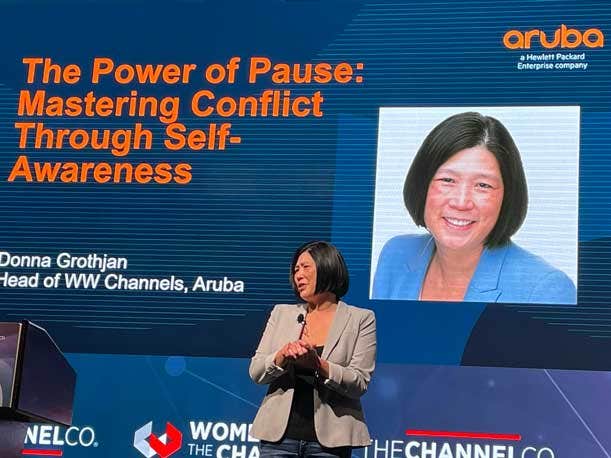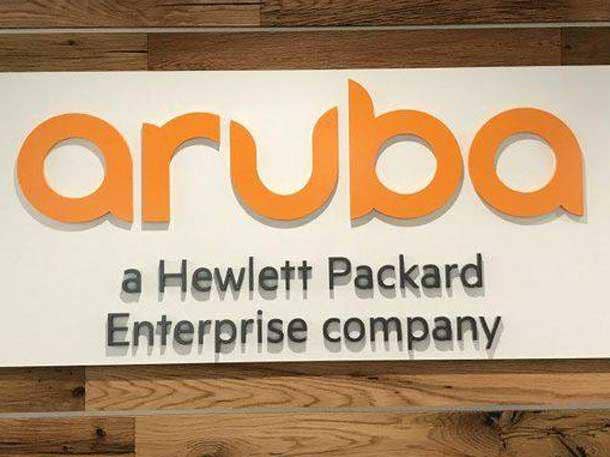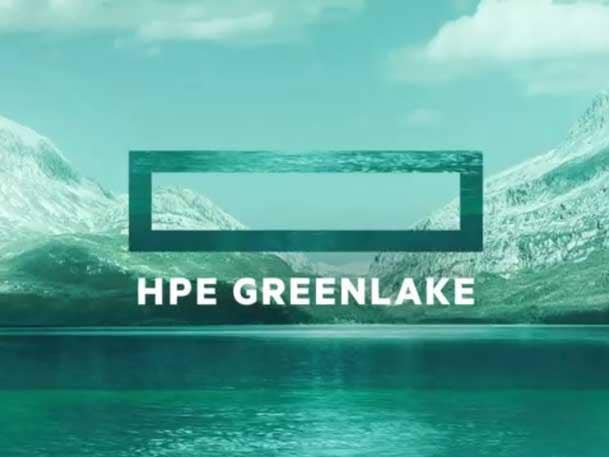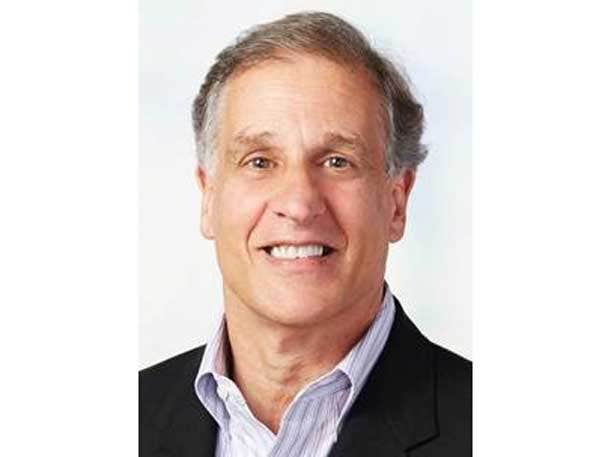Aruba Channel Superstar Donna Grothjan On Why ‘Now Is The Time’ For Network As A Service, HPE Partner Ready Vantage And The ‘Biggest Challenge’ Facing Partners
Aruba Vice President of Worldwide Channels Donna Grothjan, who is retiring at the end of May, speaks about the Network-as-a-Service opportunity, Hewlett Packard Enterprise and Aruba’s Partner Ready Vantage program, and the ‘biggest challenge’ facing partners.

‘Now Is The Time For Network As A Service’
Aruba Worldwide Channel Chief Donna Grothjan says there has never been a better time for partners to drive Network-as-a-Service sales growth.
“Now is the time for Network as a Service,” said Grothjan. “What we’re hearing from customers is they’re actually asking and looking for Network-as-a-Service options. The good news is we were before our time when we launched NaaS over three years ago. We were helping educate the market on Network as a Service. Where we are today is customers are actually asking for it. So we are well positioned and our partners are well positioned for this.”
Over the past two years, HPE has more than doubled its as-a-service total contract value to nearly $10 billion.
HPE’s Aruba intelligent edge business, meanwhile, was up 25 percent to $1.1 billion in the most recent quarter ended Jan. 31.
“The great part is we have growth across the entire portfolio,” said Grothjan. “When you think about the pandemic and the shift to digital transformation, coupled with some of the challenges that we’ve had around supply chain that everyone in the networking category experienced, that demand and that shift of digital transformation is still happening.”
Grothjan said the biggest greenfield opportunity for partners remains in acting as managed service providers for their customers.
“For us the biggest opportunity is still with managed service providers,” she said. “Since we launched our MSP program three years ago, we have about 500 solid managed service provider partners that have joined our program. We continue to believe that’s the best opportunity for our partners.”

Why are you retiring and what are your plans for the future?
Well, first you should know that I’ve been thinking about this over the last three years. So this is not something that came up recently.
I’ve been in channel for 30-plus years. And so for me I’m looking at what’s my next step? First of all, I’ve had an amazing run in the channel in terms of the companies that I’ve worked for, and the opportunity that I’ve had to really be a partner advocate and help grow the channel.
I’ve had the privilege to be able to participate in a lot of that. And so I’ve started to think about what was my next step and my personal career goals. I feel like I’ve met all of those goals in terms of my current channel chief role.
I have had the opportunity to realize everything that I’ve wanted to and the next step for me—which I have been thinking about for a long time—is wanting to participate and serve on boards [of directors].
HPE has an amazing program where they chose 12 women in the company to mentor for board positions. That provided us with the opportunity to interact directly with a lot of our board members and with [HPE President and CEO] Antonio [Neri]. The idea was to help with our development with the opportunity and mindset of ultimately taking a board seat with a company.
I also pursued my certification with from the National Association of Corporate Directors. My goal is to step away from a channel chief role and to look for board opportunities that align with things that I think I can help companies with, like scaling the business through the channel. That is something I have had a lot of experience with, having worked with all aspects of the channel over the last 30 years.
Will you look at participating as a board member on solution provider companies?
Absolutely. I am very open to that, but first I am going to step away and take some time off. I don’t want to have to wake up to an alarm clock for the first month or so.
I really want to sit back and think about what I want to do. This isn’t just ‘let me take a board seat if something comes up.’ I would welcome any opportunity, but I need to spend some time thinking about what types of companies my strengths play to and then really start the search. This is something where I really want to spend some time doing a search for a role and position that suits me. That is my next step.

What is your message to partners at the Aruba Atmosphere conference with regard to your position and the future of Aruba?
In November, we fully launched HPE Partner Ready Vantage for Aruba. So a year ago we announced the service track and then in November we announced Partner Ready Vantage for Aruba and the Centers of Expertise. So we are going to reinforce that message. We are going to reinforce the growth in Network as a Service and the opportunity with our partners to work with us there.
Now is the time for Network as a Service. What we’re hearing from customers is they’re actually asking and looking for Network-as-a-Service options. The good news is we were before our time when we launched NaaS over three years ago. We were helping educate the market on Network as a Service. Where we are today is customers are actually asking for it. So we are well positioned and our partners are well positioned for this.
How do you see Aruba Network as a Service competing against Cisco at this point?
We designed our Network-as-a-Service Packs to be extremely flexible.
We take each Service Pack and then we think about it like a Lego block. So we are providing the ability for a partner to easily build and assemble whatever the need is for their customer with the ability to deliver it as a service. And we include customer experience as part of the solution.
Everything comes in a Service Pack. You don’t have to worry anymore about build and material. It comes with the infrastructure you choose, whether it is an access point or a switch. It comes with a central license, power supply and customer experience. It is everything wrapped into a single Service Pack. It is really about the ease of doing business.
We offer this to partners with the ability to subscribe on their own and build a managed services practice on top of it or they can resell it to the customer. We have made it flexible, easy to consume and easy for the partner to deliver it anyway they want to.

Are there any changes on the compensation model with Partner Ready Vantage?
No, we are not announcing any changes to compensation. We are announcing a new data center competency.
We’re going to continue to make investments in the data center networking area so we are announcing a data center competency so we can start working with partners on aligning to the CX [enterprise networking switching] platform.
Aruba has the 11 percent rebate structure compared with the GreenLake rebate structure of 17 percent. Is that still the case?
That is still the case.
The reason for that is we rely on our partners to do all of the services—presales, delivery and management—so the opportunity is there for them to deliver day zero, day one and day two services. In fact, that is part of the requirements of the program. We rely heavily on our partners to do that. So the opportunity for them to create services revenue and margin on the infrastructure for HPE GreenLake for Aruba exists. That is the reason why the incentive structure is slightly different because it is a slightly different go-to-market model.
What do you see as the future for the Aruba Network-as-a-Service offering?
Our entire portfolio is available as a service and we are continuing to roll out more infrastructure in as-a-service packs.
The future is more options for our partners. So whether our partners want to continue to sell in a Capex model or they want to sell in an as-a-service model, whether they want to deliver on-prem or leverage any of the services that we have to offer, the option is there for them.
The future has always been and continues to be about partner choice. Our partners have the option to deliver any way they want to. We are enabling solutions for customers to consume any way they want to. So partners can put any combination of these things together to support their customers.

What is biggest greenfield opportunity as you look at the full panoply of partners in the ecosystem model?
For us the biggest opportunity is still with managed service providers.
Since we launched our MSP program three years ago, we have about 500 solid managed service provider partners that have joined our program. We continue to believe that’s the best opportunity for our partners.
I say often that I don’t believe there’s a single vendor that can support 100 percent of the needs of any customer. So our partners need to enable business outcomes. They need to put third-party products together to deliver an entire solution.
Partners need to evaluate what are the right models and structures to do that. We believe that a managed services model around networking is probably the most profitable opportunity for a partner.
I think our differentiation is the ability to purchase the Network-as-a-Service Packs, which give a managed service provider flexibility. They don’t have to make that Capex investment if they just want to buy from us in a subscription model and then build their services around it and deliver to the market under their own brand.
Today it is structured as a sell-to model to the 500 partners that we have as part of our managed service provider partner program.
We also have service providers too. A lot of the large SIs and legacy telcos fall into our service provider segment.
The MSP program is much more of a broad-based program that is scalable, whereas some of the larger service providers have very specific needs.
Where are you seeing the greatest sales growth? The great part is we have growth across the entire portfolio. When you think about the pandemic and the shift to digital transformation, coupled with some of the challenges that we’ve had around supply chain that everyone in the networking category experienced, that demand and that shift of digital transformation is still happening.
So it’s hard to pinpoint. I can tell you we have areas where we have a higher growth rate opportunity in areas like SD-WAN and with Axis Security, which we just purchased for the SASE opportunity. So we have large growth opportunities, but the overall business is growing.

What are the accomplishments you are most proud of?
No. 1, I feel like I have built an incredible team. They are one of the best partner teams that exists. They are extremely creative, extremely dedicated. They are just amazing individuals.
It wasn’t just me building that team. We’re just a fabulous team together. We rely on each other very heavily just like a family.
Then I would say the launch of HPE Partner Ready Vantage. I’ve been in this role for seven years. We launched Partner Ready for Networking back in 2016.
You need to constantly reiterate and reiterate. Partners want consistency and predictability and they want profitability. As the market shifts, we need to be very conscientious about not just doing a wholesale change on them and making sure that we’re enabling that journey or that shift to happen in a way that they can consume it.
Partner Ready for Networking is still an award-winning program. We left it intact. We launched HPE Partner Ready Vantage so we could accelerate our as-a-service growth. We have that consistency and predictability in place and now we’re looking to drive growth in the market through as a service.
What is the biggest challenge facing the channel as you look forward?
If I were to pick one thing it is the shift to as a service. Our partners have a sales force that has been selling in a Capex model for a very long time. With the shift to as a service the question is: How long does it take to train your sales team where [as-a-service Opex sales] becomes part of their DNA and they are able to sell in that [Opex] model? Partners need to be able to identify customers and bring to those customers the appropriate solution.
The dialogue needs to happen with the CFO and the line of business in some cases as opposed to the IT organization. A lot of those long-standing relationships exist with the IT organization, but now new relationships need to be established. And it’s not just new relationships because the shift to line of business happened with digital transformation growth.
The dialogue needs to center around what are some of the financial goals of the customer, as opposed to what are just the solution goals? What are the KPIs [key performance indicators] that they’re looking to meet? That goes back to business outcomes the customer is trying to achieve. And those conversations start in a different place than, ‘Let me tell you about the latest product that we announced.’
So to me the biggest challenge is that development of the [partner] sales force. Partners need to make the decision on whether to spend time training the existing sales force or do they make the investment on new sellers, even though they are not going to realize the return on that investment right away.
There is a host of other operating model aspects that need to evolve with partners. For me I think the biggest challenge is the evolution of that sales force.

How has the role of channel chief changed with the ecosystem model, which encompasses the full panoply of partners including systems integrators, service providers and agents?
I think the role of a channel chief inside an organization historically was, ‘Here are the products we are launching. You need to ensure partners are enabled and there is a program to support it.’ It was more about communication and pipeline generation.
It starts today internally with the need for a channel chief to engage with different people in the organization. It used to be you spent a lot of time with your enablement and sales teams, your sales and enablement leaders and to some extent your product teams. Now a channel chief really needs to be integrated with their PLM [product life-cycle management] teams to understand and provide feedback on how products need to be developed to incorporate what partners’ needs are.
The reason for that is everybody is shifting to a platform model and when you shift to a platform model partners need to be able to build potential services off of that. We have to think about how a partner is utilizing a platform as opposed to we just put the platform out there and expect the partner to be able to sell it and use it.
So the first thing is you really need to engage with your PLM team and start to incorporate partner requirements into their development cycles. You need to spend more time with your CFO, helping them understand as the shift [to as a service] is occurring in the market and focus on what are we doing to bridge the gap from the existing [model] to the new [model] and how do we help partners through that.
It could be just having the dialogue with partners from our point of view or it can extend to what kinds of changes we need to make in a program and the fact that we may need to invest a little bit more up front before we see that return as partners are moving along the [as-a-service] journey.
Quite frankly, you also need to spend time with your HR organization on helping to recruit individuals in the organization who are thinking differently. Maybe that means they are not coming specifically from the IT industry or parallel industries or parallel functions. You need to bring different kinds of knowledge into the organization.
Those are just a few of the areas where channel chiefs are spending time and having different conversations than they might have had five years ago. All of that plays out and has to be incorporated into the [channel] program and what you deliver into the market. So as an example, with Aruba Central, we built out specific managed services functionality for that product. It is built for a managed service provider. It is multitenant and gives them the ability to look at multiple customers and multiple networks at the same time with the ability to manage it.
So managed services partners don’t have to go in with a customer login and look at it through the customer login. They get the ability as a managed service provider to see that view of the customer.
You also have to leverage that as part of your program. As an example, with our Customer Success Center of Expertise, we put in the ability for our partners to receive real-time telemetry from our systems. Basically what we have done is created a playbook for partners like we have with our own customer success managers. That includes when do we electronically touch or physically touch a customer. That playbook we provided to our partners along with the data demonstrates when they should go out and engage with a customer. Then we have taken it even further than that by having a partner success manager call on those partners to understand how to get the most value out of the telemetry and how to have the dialogue with the customer so the customer sees the value of what they are selling and providing. All of that is under the partners’ brand.
So as part of the MSP program they have the opportunity to also participate in our Customer Success Center of Expertise that gives them all of that information that they can deliver through their own set of services.
The whole value proposition to the partner has changed. Historically everyone always wants to talk about what is the incentive? What is the incentive? What is the incentive?
The shift for us is more about value creation. Are we creating more value for the partner so it is more long term and they are not reliant on us putting out an incentive and then we take the incentive away?
This is all about us taking the same investment and incentive and putting it into infrastructure, knowledge transfer and development that creates a much more long-term, sustainable value proposition for them. For us it is all about value creation.

How do you see public cloud marketplaces evolving for partners going forward?
I think obviously they are a viable route to market. It is about customer choice. Partners are having to choose whether they think the public cloud providers are a viable option depending on what the solution is.
For HPE we obviously believe in the hybrid IT environment and therefore the view for us is it depends on what the customer is looking for. It really all starts with data. What are the needs for the customer from a data perspective? So what data do customers want to control and what data are they OK with putting into a public cloud environment? A lot of that is driven by data sovereignty laws and other things.
The way I look at it is that is absolutely a viable route to market, but it is still about choice. There are always going to be situations where there is going to be a requirement for a private cloud environment.
Who have you looked to as a mentor over your years in the channel?
There are so many people I could name. It is really important that people build good networks but that you also have multiple mentors.
[Global Technology Distribution Council CEO] Frank Vitagliano (pictured) has been a mentor of mine for 20-plus years. Through being mentored by him I have met many other individuals that I have grown to have a mentoring relationship with. Then there is [former HPE Software Chief Sales and Marketing Officer] Sue Barsamian [also a board member for Box, Five9 and Gen] who hired me at HPE. She’s a fantastic leader. I learned a lot from her and still continue to learn from her.
I have different mentors for different areas of personal development. I feel really privileged to work with so many different individuals that have been willing to provide me with guidance and advice at any time that I needed it.

What is your message to partners as you take on the next chapter of your life?
My message is I will still continue to be a channel and partner advocate. That doesn’t go away with me. That is in my DNA. I will still engage with many people in the industry. I will continue to keep learning and stay up to speed on what is going on.
For me personally, it is about wherever I can help partners as an advocate. I am looking forward to sharing any knowledge that I have. My main message is: Right now from an industry perspective, while there might be economic headwinds, we have never been sitting in a better place from a technology perspective.
From an HPE perspective, the portfolio has never been better. I am proud to have worked for this company for nine years and proud to have engaged with all the partners I have had the opportunity to meet and work with over the last 30 years.
What has been the best part of working in the channel?
It is all of the relationships I have built over the last 30 years. I think it is hard sometimes to describe the channel. Sometimes you have to take the leap of faith. There is an element of a leap of faith especially when channel chiefs are having conversations inside their companies.
The best part of working in the channel is the engagement with our partners and being able to be part of an industry that has grown and changed as much as it has.
I feel like I have been part of that in terms of the development and growth of the business and not just sitting on the sidelines and watching. I feel privileged to have had the opportunity to work for the companies I have and to engage with the people I have met and known over the last 30 years.